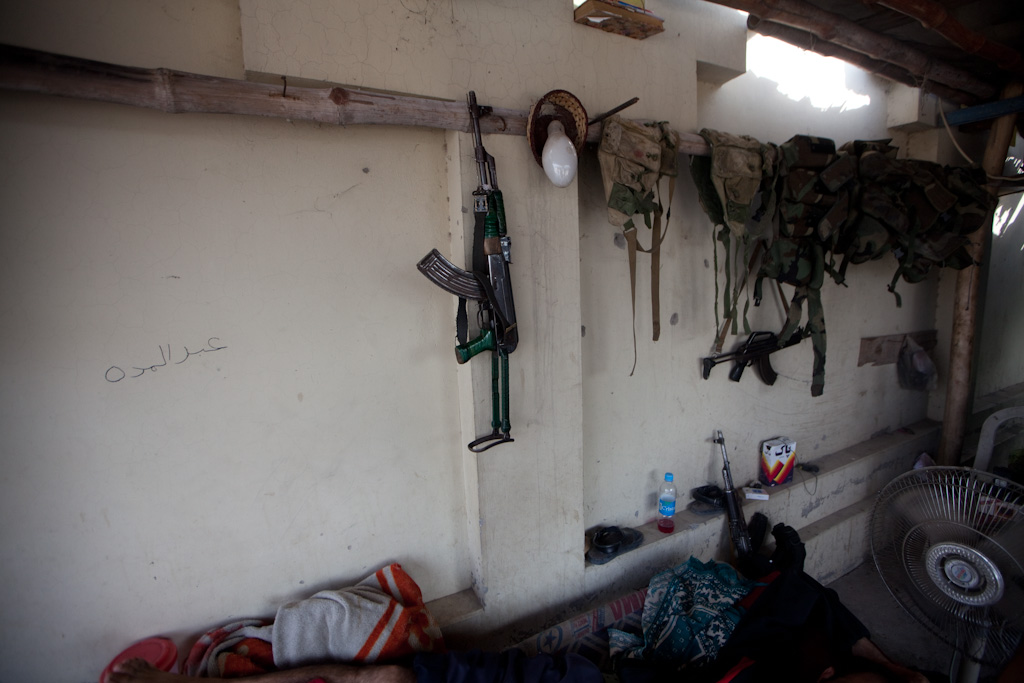Given the situation in Afghanistan how smart is it to conduct street/ad-hoc research on the ground? To answer this it’s worth reflecting on the working models for 3 different foreigner roles in Afghanistan: the military; NGO staff and journalists.
The military and those that work alongside the military consider themselves targets every time they step off the base – they’re armed and they typically don’t ride in anything less than a SUV. Where traffic allows – their convoys prefer to go at high speed through the city, and on a mundane level they are disliked by everyone else because they generate traffic jams when they go by. If you’re sitting in traffic – your phone call may be dropped when they drive by because they carry mobile phone signal jammers, to foil the remote detonation of IEDs. (Those of you interested in how the Army applies anthropological skills to their own operations here should read this and this).
Most of the NGO staff here live in compounds with barbed wire-topped high-walls and Kalashnikov wielding armed guards at the entrance and if they wish to keep their jobs, they abide by strict rules that dictate where they can go when. Their compounds may have a safe room and planned escape routes, the larger ones have meaty barriers, layers of protection and look-out posts. NGO staff will have a list of places they can and cannot go in the city – based on a security assessment plus current chatter. As an example – a number of restaurants and cafes in Kabul that are frequented by foreigners have previously been considered secure enough, but are now off-limits because current chatter suggesting that they are active targets.
NGO staff forays outside their compound are approved by their security team and a trip through the city might not actually involve their feet touching the ground: personnel climb into a car inside their compound; drive through the city, and if the destination venue allows they pull the vehicle into the compound before stepping out. Many venues such don’t have space for parking so the car pulls up and the passenger walks the 5-10 steps from the car door. For NGOs and other organisations operating in at the more secure/paranoid end of the scale an interview with a farmer might require a back-up vehicle; 2 drivers and 3 or 4 security – which obviously affects the dynamics of any conversation that takes place. Protocols dictate that field staff don’t go out before 10am – more ‘security events’ happen in early morning apparently. In an environment where you need to sync with the driver and wait for clearance to leave spontaneity is deliberately impossible. NGO staff generally avoid hanging out anywhere where the military, or military contractors are found partly because the the latter are more likely to be targeted; and partly because of the stark difference in attitude about what is going on here and what to do about it.
The journalist model involves hiring a driver and/or fixer, travel light and rely on an unpredictable schedule to throw off any pre-mediated violence or kidnapping – though since their work sometimes involves spending time with people who are targets this risk can be extended to them. The judgement call about where to go when includes contextual understanding; personal network; and relying on the advise of their fixer, but is ultimately made by the journalist.
The research that we’ve been conducting these past weeks in Afghanistan have been based around the journalist model – and broadly speaking its worked well. A core team of myself and Panthea rotating in mixed-gender local fixers depending on the city.
One area where we’ve deviated from the journalist norm is in our use of transport: motorbikes have helped us beat the traffic and frankly are a more interesting way to traverse the city. Hiring a driver with a trial-bike can open up a whole world that is otherwise logistically off-limits, although most bikes are of the on-road variety. We’ve tried three-on-a-bike, but its a bit unwieldy. A motorbike + driver can be yours in Afghanistan for anywhere between 1,400 to 3,000 Afghanis ( 25 – 50 Euros) a day. Those interested in conducting street research here should read this.
There are numerous people here who don’t fit neatly into what I’ve described here, for example NGO staff may live in a regular compound with no distinct security.
When it comes to security and organisations I’ve long learned that its best not to ask the question if you’re not prepared to listen to the answer. If you ask and don’t follow the rules someone’s job can be on the line as and when you get into trouble, and to put it simply when that happens it’s likely that someone will be tasked to pull you out of it. Risk is rarely personal, and sometimes its best not to ask.
Each visit to Afghanistan builds on my understanding of what works and what doesn’t and I appreciate how much there still is to learn. How do the risks of working out on the streets stack up compared to other countries? I’m not pretending its a cake-walk but I probably have a greater chance of being shot in Chicago, of being run over in Shanghai, of being pick-pocketed in Milan. The same goes for you.

